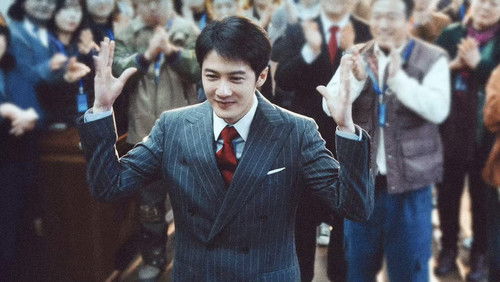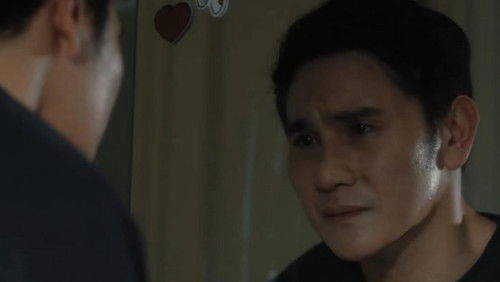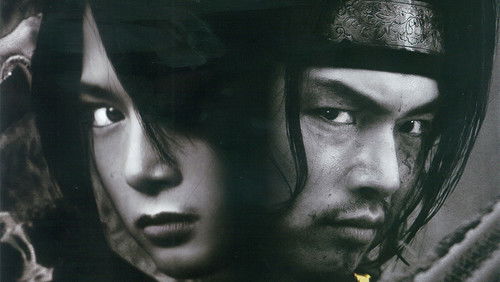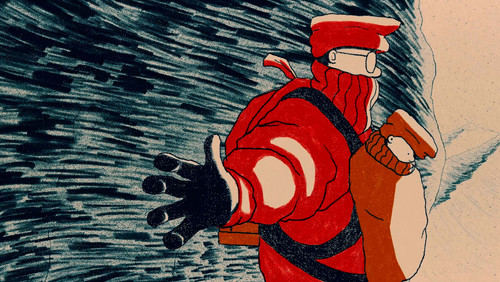Yawar Mallku (1969)
39KYawar Mallku (1969). 1h 10m
“A radical, marxist, revolutionary, foundational Third Cinema attack on Western values and U.S. cultural imperialism, Jorge Sanjinésu0026#39; Blood of the Condor had a profound impact on Bolivian politics at the time of its release and still casts a shadow across Latin American polity to this day.u003cbr/u003eu003cbr/u003eThe filmu0026#39;s accusations that U.S. Peace Corps volunteers sterilized indigenous women of the Quechua ethnic group inspired widespread protests during the late 1960u0026#39;s, stoked long-simmering anti-U.S. attitudes in Latin America, and led to the removal of the Peace Corps from Bolivia altogether.u003cbr/u003eu003cbr/u003eThe film is passionately told from the indigenous peopleu0026#39;s perspective and is driven by an anger that tilts it away from investigative exploration and towards propaganda. This is, of course, the very nature of Third Cinema, so I only mean to describe the thing itself, not level criticism. I use the term u0026quot;propagandau0026quot; in its purest definition.u003cbr/u003eu003cbr/u003eThis movie willfully paints the situation as a parable of the noble indigenous against the cruel, alien, indifference of the Euro-Amercan matrix. And the fact is, U.S. cultural imperialismu0026#39;s hubris and ignorance did lead to a complete breakdown in Bolivian/American relations at the time.u003cbr/u003eu003cbr/u003eMolly Geidel, author of, u0026quot;Peace Corps Fantasies: How Development Shaped the Global Sixtiesu0026quot; found documents decades later clearly showing that the Bolivia Peace Corps director and volunteers with the agency, inserted IUDs in indigenous Aymara women at the time, despite not always having medical credentials and not being able to communicate well with the women.u003cbr/u003eu003cbr/u003eSo, it would seem that it wasnu0026#39;t the large-scale premeditated sterilization of a people that this film would have you believe, but none-the-less, an incredibly problematic policy practiced by the U.S. Peace Corps. Itu0026#39;s not a long walk from nonconsensual contraception to accusations of population control. But the true story gets more complicated.u003cbr/u003eu003cbr/u003eLong after this movie was released, a 2002 report by Peruvian Health Minister Fernando Carbone suggested that the president of neighboring Peru, all around asshole Alberto Fujimor, was involved in the forced sterilizations of up to 300,000 Quechua and Aymara women between 1996 and 2000 as part of a population control program called u0026quot;Voluntary Surgical Contraceptionu0026quot;.u003cbr/u003eu003cbr/u003eThe United Nations and other international aid agencies supported this campaign, and yes, USAID provided funding and training for it. Whether these Western NGOu0026#39;s and Orgs were told that it was a voluntary family planning program (as the title suggested) or they knew it was a crime against humanity, I canu0026#39;t say.u003cbr/u003eu003cbr/u003eThe point is, the conspiracy theories this film uses to push its political agenda are based on either an eventual truth, or an ongoing truth that we simply donu0026#39;t have the full reportage of. So the movieu0026#39;s anger is prophetic or timely, but regardless, righteous.u003cbr/u003eu003cbr/u003eSuch programs of sterilization and contraception have led to heightened popular suspicion of birth control in Bolivia, Peru, and other parts of Latin America, where people continue to associate it with imperialist colonization of the human body. (We would be remiss if we didnu0026#39;t add the Catholic churchu0026#39;s vilification of birth control and reproductive family planning to this paragraph as well.)u003cbr/u003eu003cbr/u003eBut Sanjinés rage is really aimed at all of the U.S.A and Europeu0026#39;s collective sins committed on the South American mind and body in the name of economic and military control. So itu0026#39;s hard to blame him when he shows a complete disinterest in understanding the full complications of the cultural conflict in his moment of creative revolutionary filmmaking fervor.u003cbr/u003eu003cbr/u003eAn artist does not mobilize their side or empower their u0026quot;ismu0026quot; by making a film about the u0026quot;inherent fallibility of the Western savior complexu0026quot;. No, they cast Americans as evil. Otherwise their argument will be too complex, not base enough, it will not make use of core emotions to activate the people, it will appeal only to their intellect. It will not truly be revolutionary cinema.u003cbr/u003eu003cbr/u003eTaken solely as a movie, this is a pretty exciting living document. It vibrates with authenticity. Non-actor Quechua people represent their culture and their language. We see scenes filmed amongst the extraordinary vistas of the Bolivian mountain ranges. And we get a pointed and interesting Bicycle Thieves like social narrative aimed at a capitalistic healthcare system that seems to be just another weapon used to murder the indigenous. The movieu0026#39;s spirit is strong and concise, and much of its roughshod filmmaking is quite bold.u003cbr/u003eu003cbr/u003eIt employs a flashback structure. We learn about events after weu0026#39;ve seen the outcomes of them, and I came across an interesting story about that.u003cbr/u003eu003cbr/u003eAfter screening the film many viewers from lower income communities, with less exposure to cinema and less formal education, the very people Sanjinés was hoping to represent, voiced criticisms that they had difficulty following the flashback style narration. Sanjinés was greatly influenced by European art cinema when he was younger, hence his ambitious story structure for this film, but the criticism of the u0026quot;peasantsu0026quot; woke in him a new realization.u003cbr/u003eu003cbr/u003eLater he would say, u0026quot;We cannot attack the ideology of imperialism by using its own formal tricks and dishonest techniques, whose raison du0026#39;être is to stupefy and deceive. Not only do such methods violate revolutionary morality; they also correspond structurally to the ideology and content of imperialism.u0026quot;u003cbr/u003eu003cbr/u003eIn response, Sanjinés moved away from the notion of Auteur cinema (u0026quot;Revolutionary cinema, as it reaches maturity, can only be collective, just as the revolution itself is collective.u0026quot;) and ditched complex arthouse formalism in favor of a filmmaking style built for easy consumption so he could have the most political impact.u003cbr/u003eu003cbr/u003eLastly, thereu0026#39;s an extremely interesting chapter in the book, u0026quot;Cinema and Social Change in Latin America: Conversations with Filmmakersu0026quot; which describes the difficulty Jorge Sanjinésu0026#39; had in gaining the trust of the Quechua people to participate in filming. Itu0026#39;s interesting to see the revolutionary as an outsider. As the other, hoping to capture the image of a people for his own political ends. He wanted to give the people a voice, but itu0026#39;s hard not to think of the intellectual descending among the proletariat to rouse their ire.u003cbr/u003eu003cbr/u003eAll in all, this is a really great piece of historical cinema.”









